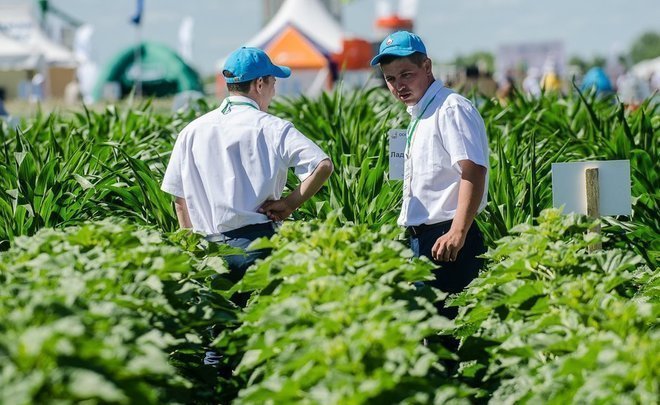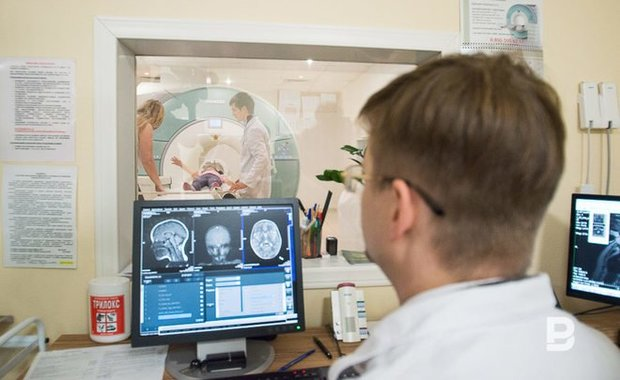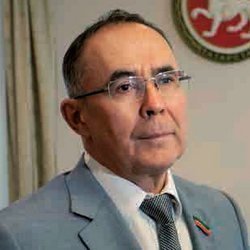‘We open a big road for the agricultural industry with this unique development’
A method that will allow agriculturists to reach qualitative indicators as accurately as possible has been created in Kazan

Scientists of the Zavoysky Kazan Physical and Technical Institute have developed an innovative method for acceleration selection, control and import substitution in agriculture. MRI was used in the research, and the efficacy of the method has already been proven. Tatarstan R&D centres for agriculture, agrochemistry and soil studies as well as Kazan Institute of Biochemistry and Biophysics participated in the unique project using capabilities of tomography. The Kazan scientists’ development impressed experts so much that it is going to be presented in the State Duma next week. Read more in Realnoe Vremya’s report.
Possibilities of MRI for farmers
Experts highly evaluate the Tatarstan know-how for the agricultural industry. According to them, there hasn’t yet been invented a technologies in the world to examine the interior of plants without invasive intervention. But Kazan scientists have taken a step ahead of everybody here using magnet resonance imaging.
The first MRI equipment was created in the West, but the homeland where paramagnet resonance was discovered (by Kazan scientist Konstantin Zavoysky) produced its own equipment too. Several years ago, specialists of the Zavoysky Kazan Physical and Technical Institute invented super-low-field MRI equipment TMR-0,02-KFTI, which though was different from Western samples and operated in a low field with low definition but was successfully used in practice. The equipment was installed in Urban Hospital No. 7 in Kazan and was in high demand. According to doctors, it recommended itself well and helped to make the correct diagnosis in many severe cases. For this MRI equipment, the developers received a state award.
The scientists created other know-how based on one of the MRI scanner models — a more compact and specialised scanner to determine bone and joint diseases.

Agriculture scientists want to use this small-size scanner now. As head of the laboratory of medical physics methods of the institute Yakhya Fattakhov told Realnoe Vremya, scientists from the Russian Sugar Beet and Sugar R&D Centre involved in the selection of Russian varieties of the vegetable asked them for help about a year ago. It is no secret that this sphere of agriculture almost fully depends on seed imports: our country’s accomplishments were completely lost in the 90s and nearly 98% of sugar beet areas have been sowed with foreign sugar beet seeds only for many years now. At the same time, losses of agricultural producers from various diseases of this plant are assessed at 24-26 billion rubles.
The goal of the Russian R&D Institute is to create their own unique varieties of beet and revive the Russian selection practice, which is topical today like never before. Employee of this institute, correspondent member of the Russian Academy of Sciences Anatoly Korniyenko came up with the idea of using MRI capabilities in this area. He asked physicists from Kazan to examine the peculiarities of bred beet samples with the help of the scanner — the test turned out to be positive.

“We examined plants’ resistance to draught — nothing provides such efficacy”
The creators of the scanner decided to test the equipment designed for medical purposes in other areas too, to diversify its application in agriculture, physics, chemistry, biology, the development of new medicines, so to speak. The scientists shared their experience during one of the seminars of the republican Academy of Sciences where Vice Chairman of the Tatarstan State Council’s Committee for Environment, Nature, Agro-Industrial and Food Policy Takhir Khadeyev participated. He was immediately interested in the presented development, the Institute of Biochemistry and Biophysics, the R&D Institute of Agriculture and R&D Institute of Agrochemistry and Soil Studies joined the project at his suggestion.
According to him, technological achievements determine the competitiveness of any country, any enterprise: “Moreover, for the countryside where, unfortunately, Russia falls behind today,” Takhir Khadeyev noted in a talk with Realnoe Vremya. “To accelerate selection achievements, we should use modern equipment as much as possible to go ahead of time. This usually takes selection achievements 10-15 years to reach fields, and this is too long.”

The results of the successful experiment were presented to the Tatarstan Agricultural R&D Institute, close cooperation between scientists of both institutes began to develop this innovative project — specialists of both schools examined not only the features of beet but also that of onion, applies, other cultures for selection, determined the potential germinating capacity. As the specialists found out, contract MRI images allow diagnosing abnormalities, which means the method of detecting defects can be used for accelerated selection, quality control of products of the agricultural industry and import substitution in agriculture, draught-resistance of plants and humidity distribution:
“We examined the draught-resistance of plants too — no other method provides such results in this area. With the help of the scanner, we got internal humidity content numbers with good definition in time, humidity content. We can say how much water and where is concentrated, what dries faster — the root or the sprout itself,” Yakhya Fattakhov told us about the results of the research.

The scientists specify that it is not only genetic research that helps to understand a plant’s ability of shaping good harvest or a high-quality seed. “But also examine the phenotype from inside, such equipment didn’t exist earlier, and the Kazan scientists’ development allows examining plants not only visually but also seeing their inner world,” says head of the Tatarstan Agriculture R&D Institute of the Russian Academy of Sciences, Doctor of Agricultural Sciences Rustam Nizamov about the achievements of the project. According to him, articles on the use of scanner technologies used to appear in the world research environment, but this method hasn’t find such deep and wide application:
“The use of the MRI scanner for tasks of Russian agriculture will allow deepening scientific research in this area, opens new unique opportunities for experiments. The instrument developed by our Kazan physicists helps researchers to see that part of plants that was invisible for the naked eye in the past, that’s to say, saving the plant’s state, examine its internal characteristics. Earlier for this purpose, the plant had to be dug out disrupting its root system or be cut, which didn’t let scientists to get new seeds from this species. Now this instrument allows us to cut plants dynamically: its structure at sprout stage, how it develops from inside, what processes happen in it, at what stage an agronomist can add corrections for the technology.”
Also, this method allows detecting anomalies in animals, notes the head of the institute. At the moment, veterinarians detect it visually — by the exterior or the genotype by decoding the genome. As Rustam Nizamov thinks, if MRI results are added when diagnosing an animal’s disease, this will seriously simplify the job of veterinarians, which in turn will give foundation for scientific research in husbandry.

Funding needed for mass production
By approximate estimates, the use of MRI results in agriculture will provide a significant economic effect by reducing the term it takes to start the production of selection materials from current 10 years to just two or three. Poultry factories can significantly save money thanks to the scanner:
“We can see if an egg was fertilised or not. Since they are imported, a fertilised duck egg costs, for instance, 1,700 rubles, while a simple one is 10 rubles. Secondly, it is important to know if an egg embryo develops in the incubator or not. If not, one has to get rid of the lot, create a new one — here a lot of money can be saved too. It is also important that MRI is harmless unlike X-ray or CT,” noted Yakhya Fattakhov.
Over the year, the Kazan Physical and Technical Institute managed to considerably expand the area of application of the scanner in agriculture. Besides the algorithm to examine samples of plants, they designed a programme for researchers who deal with poultry breeding and a programme allowing digitalising an image so that it can be analysed and compared according to different parameters.
At the moment, the sample of the small-size scanner created in the Physical and Technical Institute together with its small innovative enterprise Gradient MRT has the status of experimental. As the website of the university reads, the specialised scanner of the institute has a number of technical and operational advantages, it is 20% cheaper than its imported analogue and has better technical characteristics.
“We hope this project will be provided support of the Tatarstan management, and it will be possible to formulate a programme, get funding and actively use this instrument in the selection and other research in agriculture, for tasks of import substitution and the country’s food security. We are ready to mass produce our device, there is engineering documentation and Tatarstan has enterprises that can start its production,” thinks head of the laboratory of medical physics methods of the institute Yakhya Fattakhov.